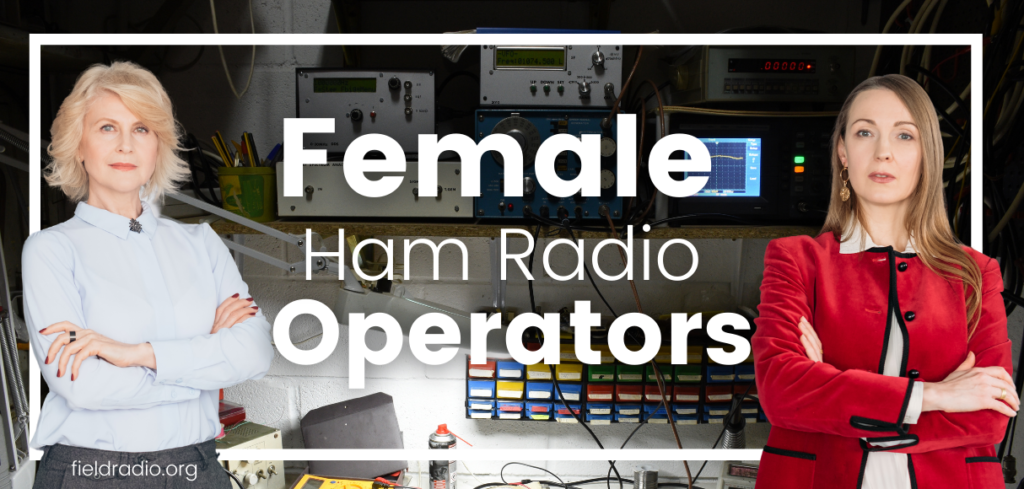Ham radio operators are obsessed with their hobby. They use any free time they have talking to fellow hams on-air or perfecting their rigs so they can talk more effectively with fellow Hams on air.
Safe to say, a Hams time in the shack is usually dedicated to talking on Ham radio, one way or another.
Some people say Ham radio operators are losers because of this, but that’s another topic.
What do Ham radio operators talk about? And is the conversation worth joining in? If so, do you just switch on your mic and start talking?
These are some interesting and important questions that you should know the answer to before jumping on-air and transmitting your signals.
In this article, I will discuss everything related to Ham radio conversations, from the common topics Hams often discuss to the etiquette of joining an ongoing conversation. So, be sure to read till the end!
Ham radio conversations usually revolve around Amateur equipment and occasionally include other topics, like the weather, a recent national holiday, or sometimes, with older Hams on-air, medical issues and doctors’ appointments.
Ham Radio Conversations – A Meta Universe
If you are wondering what do ham radio operators talk about, you are not alone…
Many people have asked this question. And now, I will finally answer it in this article.
Ham radio operators are a group of people who mostly share the same characteristics. So it is no surprise that they have a lot to talk about.
One common topic of conversation on Amateur bands is the radio itself.
Ham radio operators can’t get enough of their rigs. And every opportunity they get, they talk about it.

You will often come across Hams talking about their equipment, radios, antennas, or how crowded the bands are these days.
Most of this talk is highly technical. So, listening to this conversation can help you learn about the minute details of Ham radio. That too from the pros.
However, radio is not all Hams talk about.
Conversations happening on the Ham bands may often include discussion about the weather, politics, and general situation of the country or the city as well.
Additionally, since the average ARRL member is 68 years old, you can expect a lot of old-guy talk on air.
Many times, people have come across two or more Hams discussing their health issues, doctor’s appointments, and how their surgeries have been.
This is the gist of the conversation that happens on ragchew frequencies.
However, if you are interested in a well-organized discussion on a certain topic, Ham clubs host regular nets where Hams gather to talk about pre-specified topics. You can find your local Ham nets and join them to connect with fellow Hams and be a part of the community.
But before you join a professional Ham radio conversation, make sure to learn all the QSO codes. Hams normally don’t use QSO on the common 2m and 70cm frequencies. But some may. And if you don’t know what QTH or other Q codes stand for, the conversation will fly above your head.
You can find a list of Q codes on this blog and learn from there. The page includes a handy search, so you can find the meaning of any Q code within seconds
Are Ham Radio Conversations Private?
Amateur bands are not encrypted. So, no. Ham radio conversations are not private. Anyone can tune into any Amateur frequency and listen to the conversation there.
Ham radio was never intended for private communications. Therefore, the frequencies remain open for all licensed Ham radio operators to access without consequences.
How Do You Start Or Join A Ham Radio Conversation?
Now that you have got the answer to your question “what do ham radio operators talk about”, and you know Ham radio conversations are not private, you may want to join in.
But can you?
Sure, why not.
However, some general protocols define how you should be joining an ongoing Ham radio conversation.
First, listen carefully and make sure the people having the conversation are not too involved in it, or it isn’t something that is normally not discussed with random strangers.
The same common sense that you would use when contemplating joining a real-life conversation applies to on-air conversations.
If Hams are discussing the rigs, they built together. You cannot join in reminiscing how you have never built a rig. That would be rude and plain awkward.
Listen closely and determine if the nature of the conversation allows you to chime in. If yes, good.
Now, wait for one of the transmitters to finish talking and then join in with your callsign. Once you have transmitted your callsign, wait for the listeners to acknowledge you.
If you are acknowledged, introduce yourself with your callsign, name, and where you are from.
If you are not acknowledged, repeat your callsign a couple more times. And even if after a few tries you don’t get an acknowledgement, move on. Look for other frequencies.
Now, this was for conversation happening on regular, non-repeater frequencies.
Since many people use Ham radio for emergency communications, you might be interested to know how to break into a conversation in emergencies.
According to the ARRL, you have to use a double break, that is, say “break-break”, to indicate there is an emergency. Once you have established a contact, relay your message and wait for a response.
These are the etiquettes for breaking into an ongoing conversation in particular.
The Ham radio world has protocols for transmitting in general.
I’ll quickly go over them in the next section so you can be more confident when making your first contact.
General Ham Radio Etiquettes
It is normal to be nervous about making your first contact, especially since you know you have to follow the right etiquette.
Start by closely monitoring some Ham radio conversations before transmitting yourself. This would help you understand the transmission protocols and pick up the lingo and style of your local Hams.
When calling CQ, the Ham radio term that refers to establishing contact with any station available, make sure the frequency you have chosen is free. To check that, ask if the frequency is free, followed by your callsign. If no one replies for a few seconds, you are free to use it.
You can start by calling CQ CQ followed by your callsign. Then wait. You have signalled to anyone listening that you are available for a conversation.
If the listener is interested, they would reply.
Replying to CQs has its own protocols.
When replying to a CQ yourself, say the station’s callsign once or twice, followed by your own callsign. From there, you may carry on the conversation.
Ham radio repeaters have their own usage etiquettes.
You may not have to call CQ on a repeater. Simply transmit your callsign, say “listening, ” and wait for a response. Try and use Phonetics (the accurate ones), when speaking your callsign, so the listener can understand it clearly.
When you hear someone’s callsign followed by “monitoring”, this may be your cue to establish a new contact.
You can join in by repeating the station’s callsign once and your own callsign twice.
Keep your conversations short and polite. Repeaters are accessible over a wide area, and people from all backgrounds might be listening. Parents might be listening to the repeater as well on speaker, with their kids close by. So, use courteous, ethical language at all times.
When making a transmission, always start and finish with your callsign, and repeat your callsign every ten minutes when having a long conversation.
If you are driving and using a mobile Ham radio, transmit your callsign on any free frequency and wait for the response.
Final Word
What do Ham radio operators talk about is a question that many new Hams ponder.
Ham radio brings like-minded people together, so Hams always have something relevant to talk about.
They share one big part of their lives, which is their hobby. So, most of the conversations are often about all things Amateur radio.
Apart from that, you can come across any topic that you would expect to be discussed when people wait together in lines or gather around the water dispenser in the office. The weather, politics, and whatnot.
Joining one of these conversations or initiating a new one has set protocols. Therefore, it might help to take some time and monitor a few conversations first, learn the Q codes, the correct Phonetics, and the etiquettes of Ham radio before making your first call.

I have been passionate about the world of communications in its various forms for most of my life. Ever since I first found an old ham radio stashed away in my uncle’s attic, I have had a fascination with this classic technology.
Having the ability to communicate with people without the need to rely on telephone lines or networks is an empowering feeling which I believe everyone should have at least a basic knowledge of. Becuase who knows when you might need it?
I setup fieldradio.org with this passion in mind, to help inform people about the amazing possibilities of amateur radio and I’m on a quest to help educate as many budding operators as possible.
I hope you enjoy our content. Come and say hi, via our contact form


